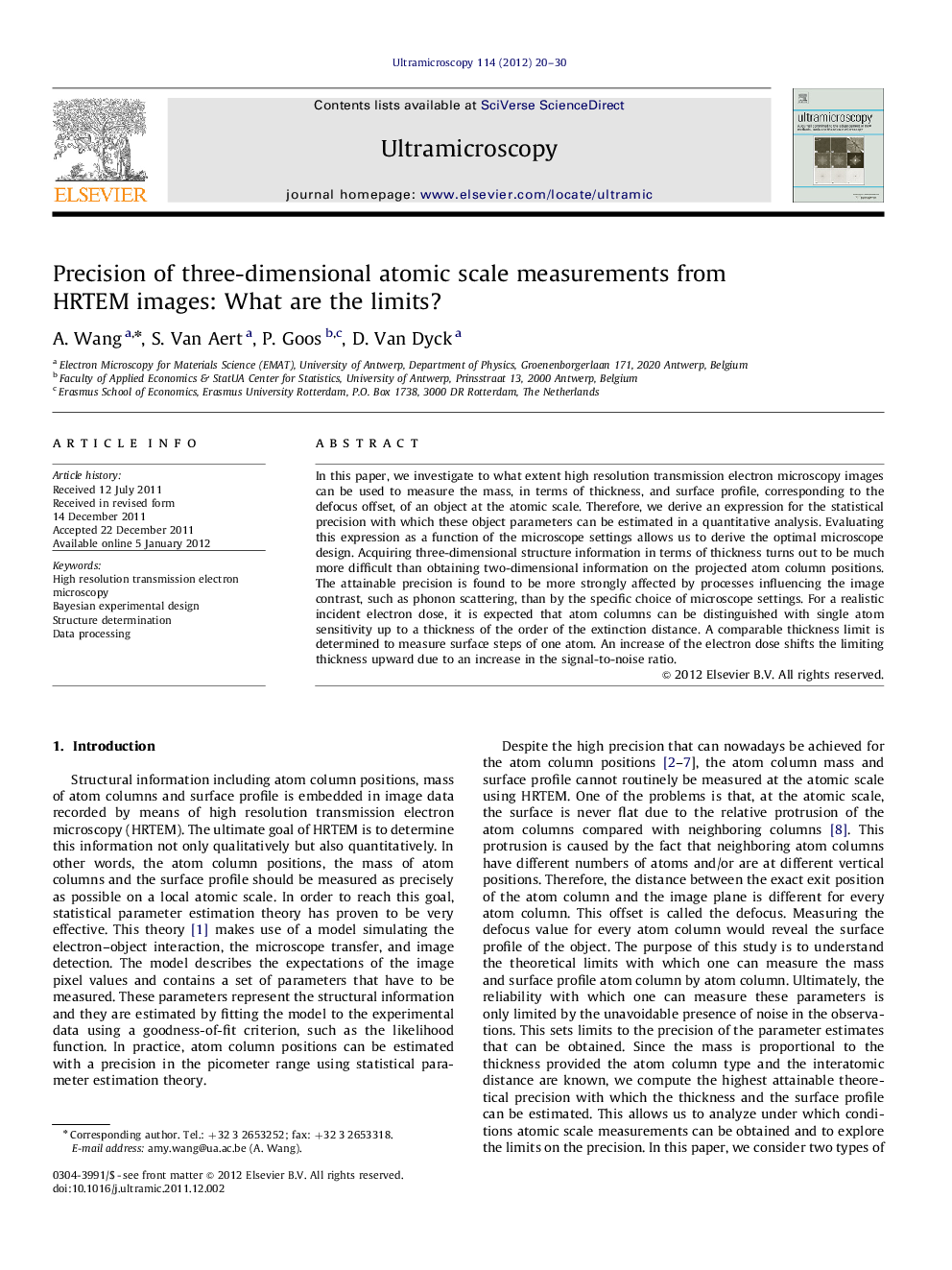| Article ID | Journal | Published Year | Pages | File Type |
|---|---|---|---|---|
| 1677836 | Ultramicroscopy | 2012 | 11 Pages |
In this paper, we investigate to what extent high resolution transmission electron microscopy images can be used to measure the mass, in terms of thickness, and surface profile, corresponding to the defocus offset, of an object at the atomic scale. Therefore, we derive an expression for the statistical precision with which these object parameters can be estimated in a quantitative analysis. Evaluating this expression as a function of the microscope settings allows us to derive the optimal microscope design. Acquiring three-dimensional structure information in terms of thickness turns out to be much more difficult than obtaining two-dimensional information on the projected atom column positions. The attainable precision is found to be more strongly affected by processes influencing the image contrast, such as phonon scattering, than by the specific choice of microscope settings. For a realistic incident electron dose, it is expected that atom columns can be distinguished with single atom sensitivity up to a thickness of the order of the extinction distance. A comparable thickness limit is determined to measure surface steps of one atom. An increase of the electron dose shifts the limiting thickness upward due to an increase in the signal-to-noise ratio.
► We derive the attainable precision which depends on the microscope and object parameters. ► Measuring column thickness and surface profile is more difficult than that of two-dimensional column positions. ► We find that the precision critically depends on the signal-to-noise ratio of the observations. ► Column thicknesses can be distinguished with single atom sensitivity up to an extinction distance. ► A thickness smaller than half an extinction distance is required to detect surface steps of one atom.
